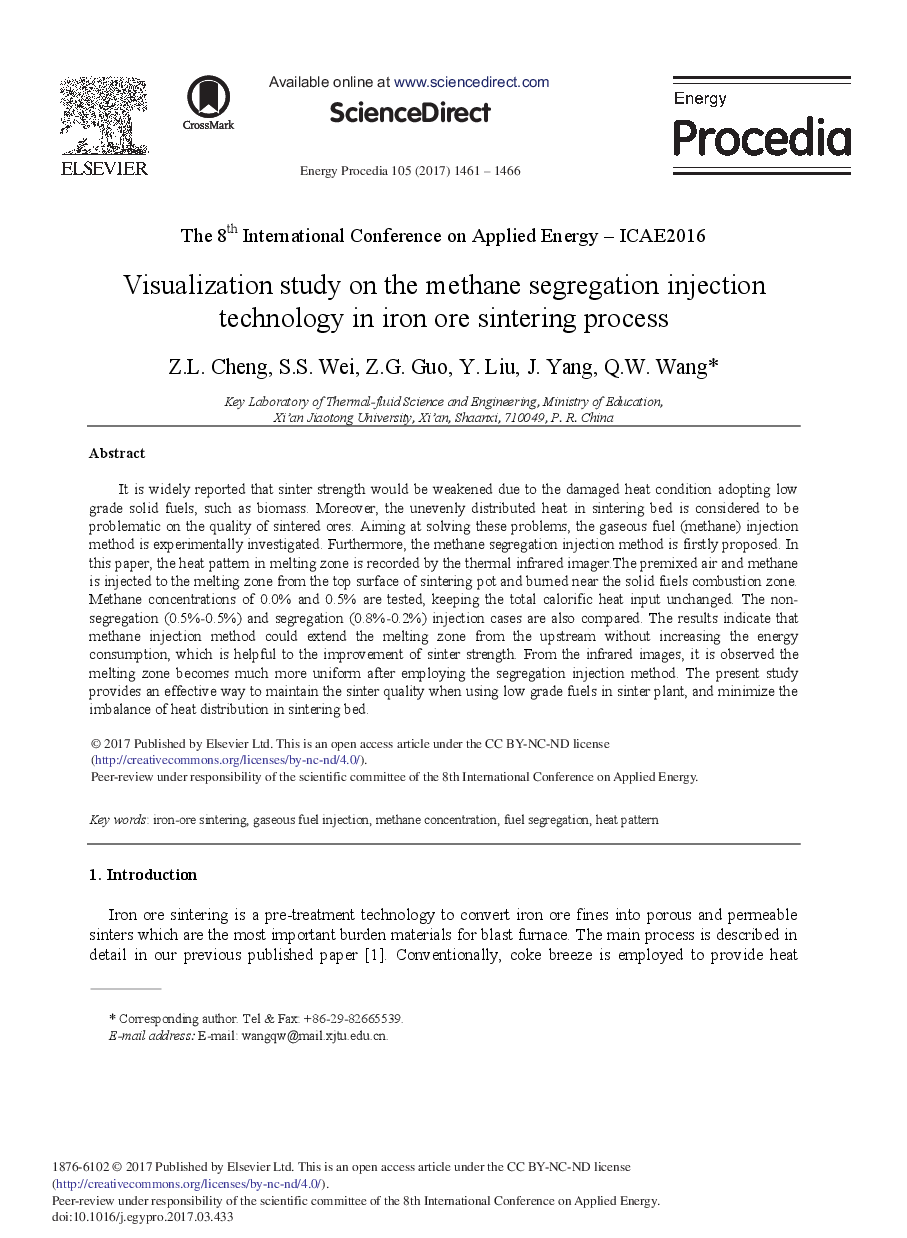ترجمه فارسی عنوان مقاله
بررسی تجربی بر روی تکنولوژی تزریق متان جداسازی در فرآیند پخت سنگ آهن
عنوان انگلیسی
Visualization Study on the Methane Segregation Injection Technology in Iron Ore Sintering Process
| کد مقاله | سال انتشار | تعداد صفحات مقاله انگلیسی |
|---|---|---|
| 153903 | 2017 | 6 صفحه PDF |
منبع

Publisher : Elsevier - Science Direct (الزویر - ساینس دایرکت)
Journal : Energy Procedia, Volume 105, May 2017, Pages 1461-1466
ترجمه کلمات کلیدی
سنگ زنی سنگ آهن، تزریق سوخت گاز غلظت متان، جداسازی سوخت، الگوی گرما،
کلمات کلیدی انگلیسی
iron-ore sintering; gaseous fuel injection; methane concentration; fuel segregation; heat pattern;
ترجمه چکیده
به طور گسترده ای گزارش شده است که به علت شرایط گرمای آسیب پذیر با استفاده از سوخت جامد ضعیف، از قبیل زیست توده، قدرت آهنی ضعیف می شود. علاوه بر این، گرمای توزیع ناهموار توزیع شده در تخت زنی، بر کیفیت سنگ معدنی دشوار است. به منظور حل این مشکلات، روش تزریق سوخت گاز (متان) به صورت آزمایشی مورد بررسی قرار گرفته است. علاوه بر این، روش تزریق متان جداسازی در ابتدا پیشنهاد شده است. در این مقاله، الگوی حرارت در ناحیه ذوب توسط تصویرگر حرارتی مادون قرمز ثبت شده است. هوا و متان قبل از مخلوط به قسمت ذوب از سطح بالای گلدان پخت سوخته تزریق می شود و در نزدیکی منطقه احتراق سوخت جامد سوزانده می شود. غلظت متان 0.0٪ و 0.5٪ مورد آزمایش قرار گرفته است، در حالی که مقدار کل حرارت حرارت را بدون تغییر حفظ می کند. موارد غیر جدایی (0.5٪ -0.5٪) و جداسازی (0.8٪ -0.2٪) موارد تزریق نیز مقایسه شده است. نتایج نشان می دهد که روش تزریق متان می تواند بدون افزایش مصرف انرژی، منطقه ذوب را از بالا به بالا گسترش دهد که برای بهبود قدرت نیروی پاشش مفید است. از تصاویر مادون قرمز مشاهده شده است که پس از استفاده از روش تزریق جداسازی، منطقه ذوب شدن بسیار بیشتر می شود. این مطالعه یک روش موثر برای حفظ کیفیت نانولوله ها در هنگام استفاده از سوخت های کم سوخت در کارخانه های آلیاژی می باشد و نابرابری توزیع گرما را در تخت طوفان ایجاد می کند.

